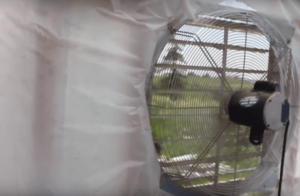Types of Greenhouse Air Conditioning
There are many different types of greenhouse air conditioning systems. A closed greenhouse ventilation system may employ spiral coils in a metal box, with fans circulating the air over the coils. Then there is the Economop, which utilizes a gas combustion process to heat and cool the greenhouse using a process of air circulation between pipes of cold water. These cooling methods are effective for greenhouses that are large enough to benefit from evaporative cooling.
The fan and pad system has long been a standard evaporative cooling system. The fan draws air through a wet pad, absorbing heat from the surrounding air. It works best in regions with low relative humidity, so this method works best in arid climates. A fan and pad system is also useful during the winter when the temperature drops below freezing, as the wet pads allow more light into the greenhouse. A fan and pad system has the advantage of being relatively simple and requiring minimal maintenance.

Another greenhouse air conditioning method uses evaporative cooling to keep the temperature of the greenhouse between 80 and 90oF. The evaporative cooling process is effective when the relative humidity of the air outside is low, but not when it is high. An outdoor temperature of 90oF can be cooled down to 67oF by using 30% relative humidity, while a temperature of 90oF with 70% relative humidity results in 82oF. A lower relative humidity means better greenhouse cooling.
Types of Greenhouse Air Conditioning Systems
Another type of greenhouse air conditioning system is the DRAGON, a highly efficient heating and cooling system based on magnetic drive blowers. It uses less energy than traditional roof top units and can even run at 10%. It offers low energy continuous cooling throughout the day. Sensors and fine-tuned set points control the performance of this system. This heating and cooling system will reduce energy bills and allow you to control each section separately.
A closed greenhouse is more energy efficient than an open greenhouse, but it also has more control over climate and conditions. All greenhouse air conditioning systems are used in closed greenhouses, and it is possible to use all of them. But active ventilation requires more maintenance and is not as effective as passive ventilation. In addition, it is not as efficient as passive ventilation, which is why growers should consult a professional before deciding which greenhouse air conditioning system is best for them.
In addition to greenhouse air conditioning systems, there are other methods of controlling the temperature in the grow room. One method involves insulating the ground area with ground cloth. Ground covering helps control temperature, while reflective ground covers help keep heat near the root zone. Different stages of growth require different heat placement. In the vegetative stage, under-crop heating is ideal. If the plants are growing in the canopy, then the root zone should be well-balanced.